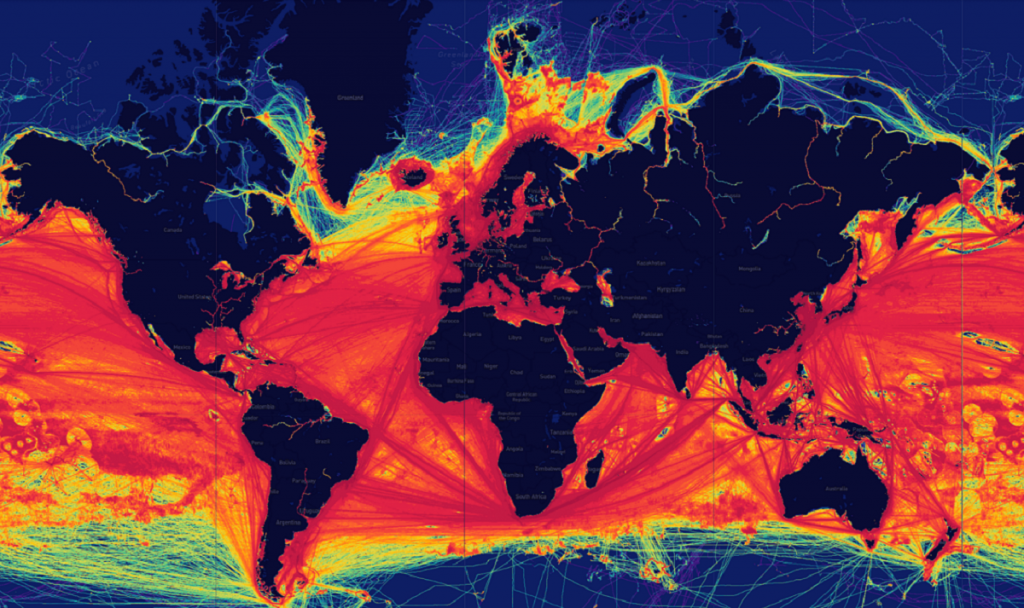by Alex Wood
Shipping makes the world go round. An incredible 90% of world trade is reliant on the transport of goods by sea. According to the IMO, there’s no sign of this slowing down either. As demand for global freight increases, maritime trade volumes are set to triple by 2050.
The global coronavirus pandemic, however, shook the worldwide economy. Consumer behaviour, trade patterns and commodity prices fluctuated wildly. And in the aftermath of Russia’s invasion of Ukraine, trade routes looks set to be reset and reshaped once more throughout this year.
Analysts at ING expect trade growth of between 1% and 2%, but with notable differences in dominant good flows. “The general trade outlook has deteriorated because of the war, but there are also mitigating effects as commodity flows are being redirected and routes are reshaped which is expected to turn into more tonne-miles. How this plays out for shipping companies largely depends on specific markets and contracting,” said Rico Luman, senior sector economist, Oleksiy Soroka CFA, senior high yield credit strategist, and Inga Fechner, senior economist, Germany, Austria, at ING.
MarineTraffic have now released Density Maps 2020-2021, which enables users to visualise the most-travelled sea routes around the world, track global vessel movements and even shipping trends.
Make sure you keep an eye on vessel flows from some of the busiest shipping routes around the world. These include:
1. Asia-US
The Panama Canal was originally completed in 1914 and had a wider lane of locks constructed between September 2007 and May 2016.
The expanded waterway began commercial operations in June 2016. The new and improved locks crucially allow the transit of larger Panamax ships. The Panama Canal facilitates major trade between Asia and the U.S, with Asia – East Coast U.S being its busiest vessel trade route.

Without the Canal, vessels would have to sail around the Cape Horn and South America’s southern tip. The Panama Canal transported a staggering 259,837,318 metric tons of goods, including coal, grains, minerals, metals, crude oils, fuels, and chemicals, across 12,245 transits in 2020.
2. Asia – Europe
The Suez Canal is the fastest and the most direct trade link between Asia and Europe.
It is also a crucial regional shipping hub for oil and hydrocarbons from Asia and the Middle East to Europe. The waterway is responsible for transporting about 7-8% of the world’s oil and 8% of liquified natural gas.

Last year, the now infamous 20,124-teu Ever Given containership was stuck in the Suez Canal for six days whilst sailing from Tanjung Pelepas to Rotterdam.
You can read more about the history of the Suez Canal here
3. Europe – UK
The Channel, which is an arm of the Atlantic Ocean that separates Southern England from northern France and links to the southern part of the North Sea by the Strait of Dover at its north-eastern end, is the busiest shipping area in the world with over 500 ships per day passing through.
Following an accident in the Channel back in January 1971 and a series of collisions with wreckage, the Dover TSS – the world’s first radar-controlled traffic separation scheme – was set up by the IMO.

Around 22% of British imports from the EU and 30% of British exports to the EU travel across the Dover Strait. The shortest distance across the strait is only 20 miles. However, throughout the last few months there have been major delays at Dover amid safety issues with consumer ferries and IT system issues.
4. North America-Canada
The St. Lawrence Seaway facilitates shipping between American and Canadian waters.

The system of locks, canals, and channels make it integral for American and Canadian international trade. From Lake Ontario in Canada, it stetches 1900 miles up to New York, serving important Canadian and American ports including Ontario, Illinois, Michigan, Minnesota, Ohio, Vermont, and Wisconsin.
The seaway handles 40-50 million tons of cargo annually, comprising iron ore, grains, mining products, liquid bulk energy products, dry bulk cargo, and breakbulk cargo. The U.S. Army Corps of Engineers conducted a study to expand the St. Lawrence Seaway, but the plan was scrapped in 2011 due to budget constraints.
Related: Smarter tracking with improved search and new map layers
5. Intra-Asia

The Strait of Malacca is a narrow stretch of water, just 580 miles in length, between the Malay Peninsula and the Indonesian island of Sumatra. It is the main shipping channel between the Indian and Pacific oceans and as such is one of the most important and busiest shipping lanes in the world. The Strait of Malacca connects three of Asia’s biggest economies: India, China and Japan. It also plays a fundamental role in connecting Thailand, Indonesia, Malaysia, Philippines, Singapore, Vietnam, Taiwan, and South Korea.
The Strait sees one quarter of global sea trade, handling about 50,000 vessels per year. However, the draught of some of the world’s largest ships exceeds the Strait’s minimum depth of 25 metres.
Alex Wood, Account Manager at London based public relations agency, Navigate PR























